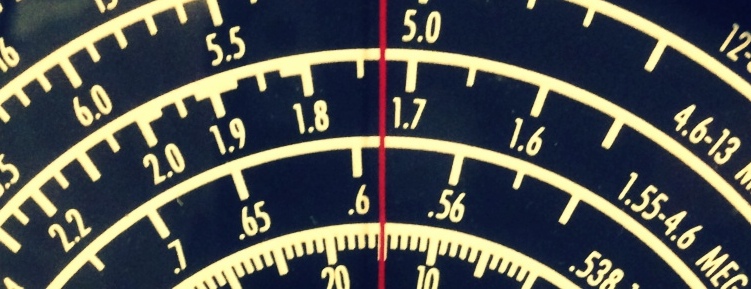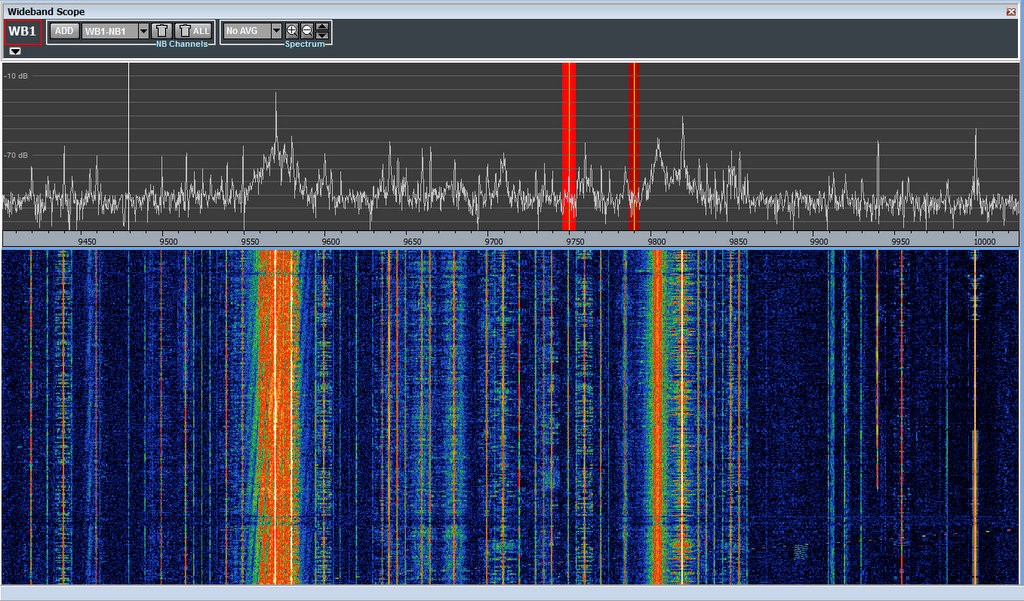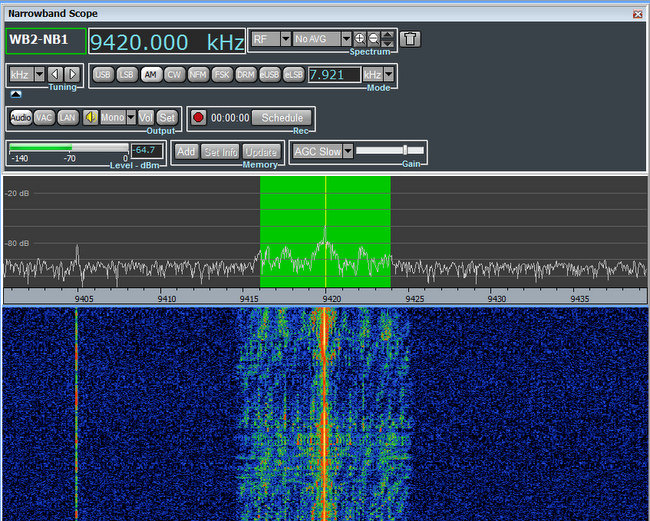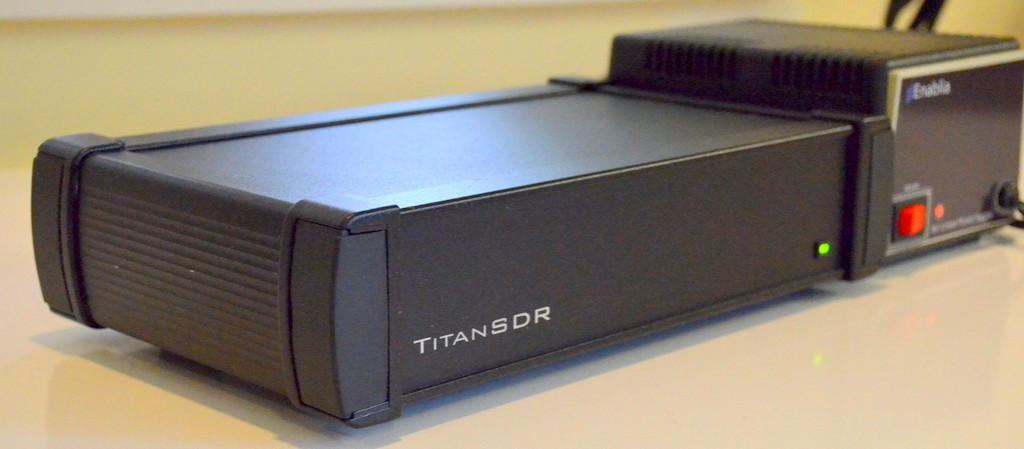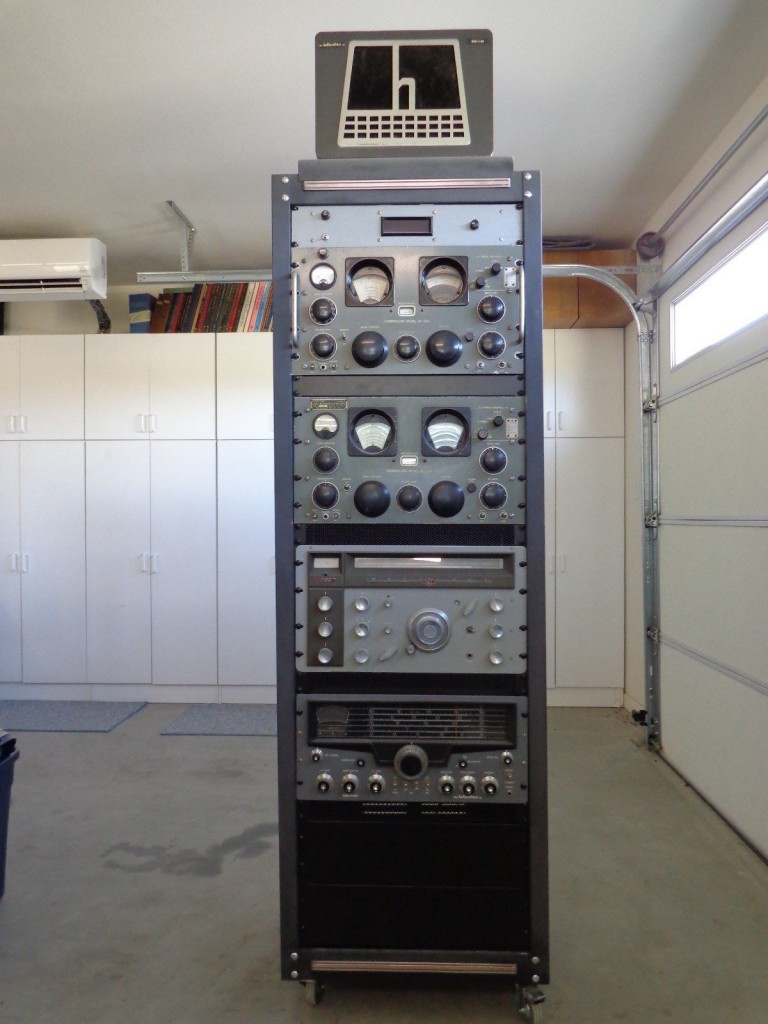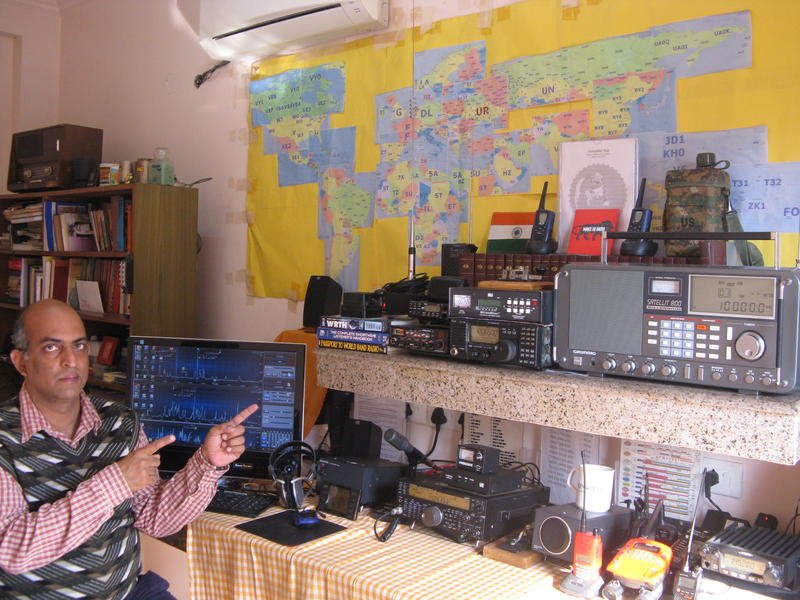
Rajesh Chandwani (VU2OEC), Gurgaon (Haryana), India INDIA
Several months ago, we conducted a shack photo contest sponsored by Universal Radio. I’m posting all of your excellent photos as time allows and putting them under the tag, shack photos.
The following is the third set of ten photos along with any notes that were included.
Click on images to enlarge and enjoy:
Robert Gulley (AK3Q)
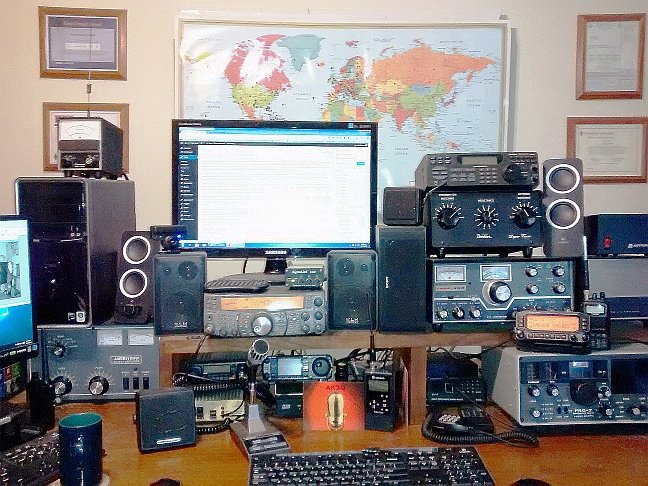
Notes: I have a Kenwood TM-D710G with lots of bells and whistles (center-right), including APRS and packet capability, Echolink, computer control, programming and data output, not to mention the regular functions of a dual-band, cross-band repeat radio. Another rig above and to the left (under the computer monitor) is my main all-mode rig, a Kenwood TS-2000. To the right is an old Swan 350 transceiver and power supply. There is an old manual Dentron tuner above that, and sitting atop of it all is an analog Uniden Bearcat BC898T scanner. There is an amplifier, a 220Mhz rig, several HTs, and on the bottom right my pride and joy Yaesu FRG-7 shortwave receiver. I currently have 6 speakers for various sound outputs. Out of the frame are two more computers, two SDR receivers, another monitor and a sound mixing board. I won’t begin to mention all the portable SW radios and several old DX-160s (my first real SW radio). I love listening/transmitting here, but I also take portable radios around the house and on the front or back porch as the mood hits.
Mahesh Jain (57HS4688)
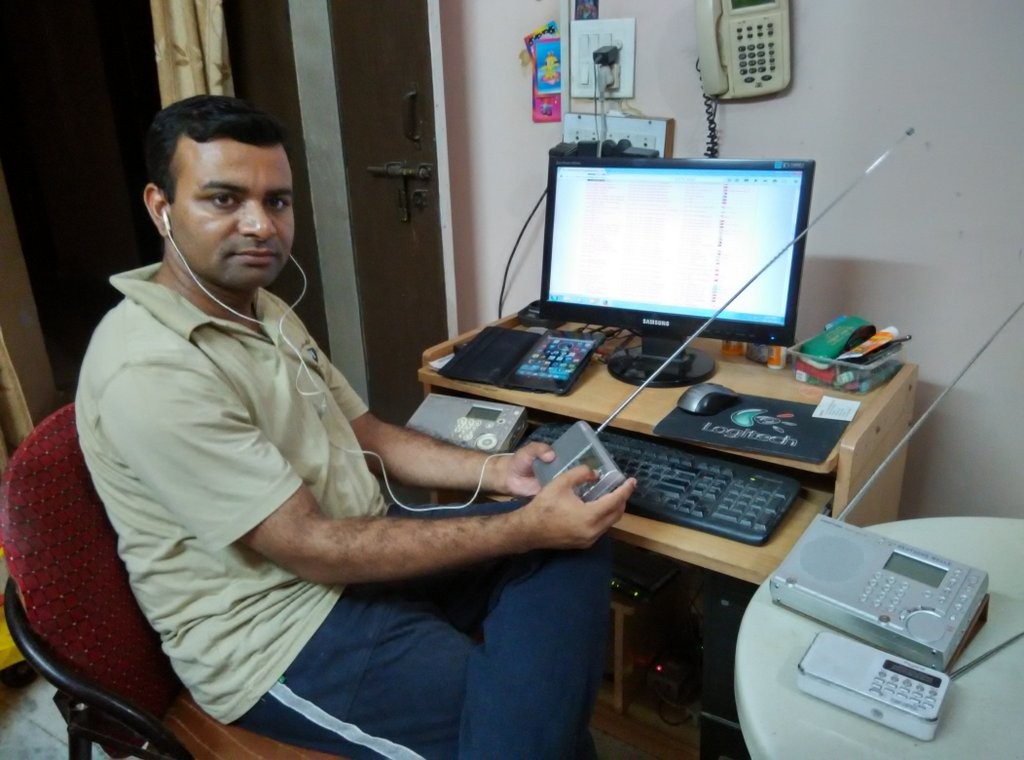
Notes: I am radio hobbyist particularly my beloved shortwave radio. But it makes me sad to see that most of the radio stations on shortwave in my country India are closing their shortwave broadcast and they are going online and digital, which is available to few not the all people. Hope the radio and specially shortwave radio revive soon. Hope we all have good old days back. 🙂
I love my Graundig Yacht boy 80 radios which I won from DW (german radio) and later i bought Sony ICF SW35. I use telescopic antenna and sometimes I use a reel antenna. I have very little technical knowledge about the radios and antennas used. Still, I keep on experimenting and sometimes found far far away stations, which is obviously a thrilling experience. with this hobby of DXing I have learned a lot about different cultures and nations. Moreover i am using the internet technology to get far away stations which are not targeting my country/region and the WEB SDR is the best source.
Ray Sylvester (NR1R)
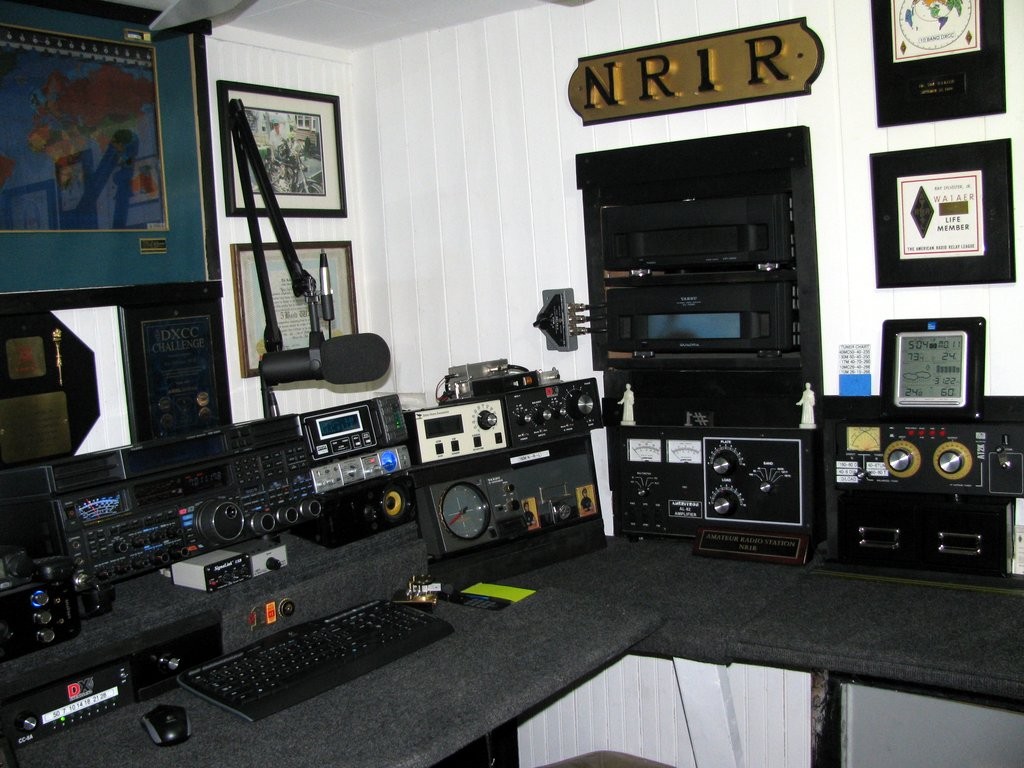
Notes: Ray’s main shack rig is the Yaesu FTDX5000MP.
Darwin McDonald (SWL/W8)
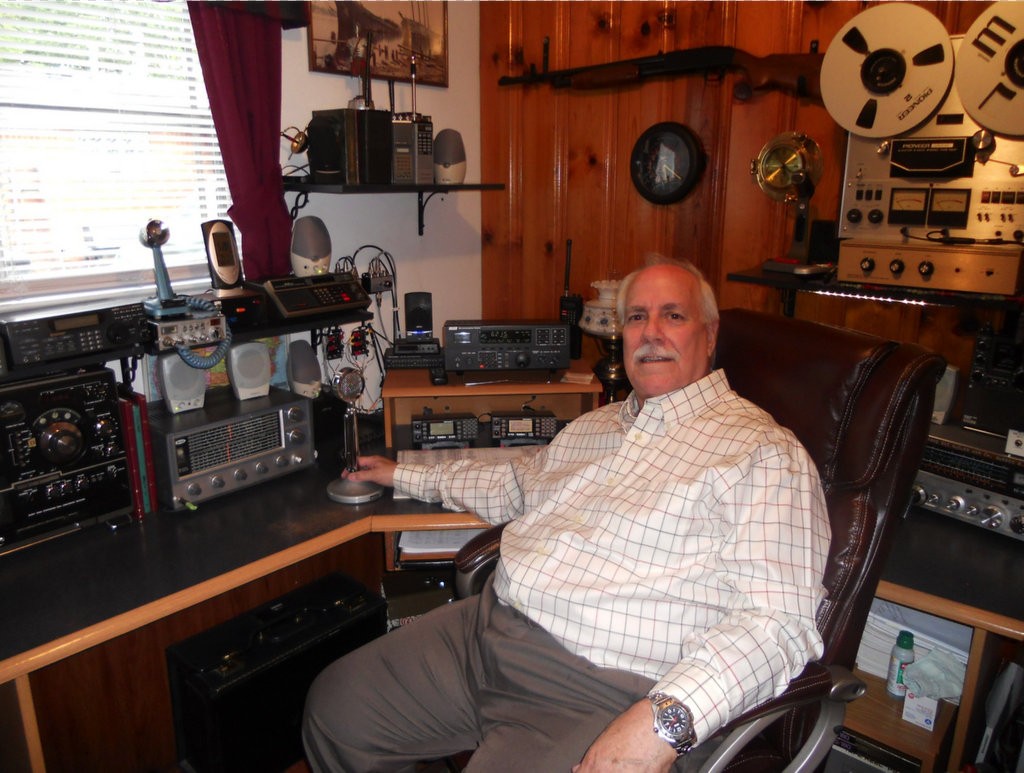

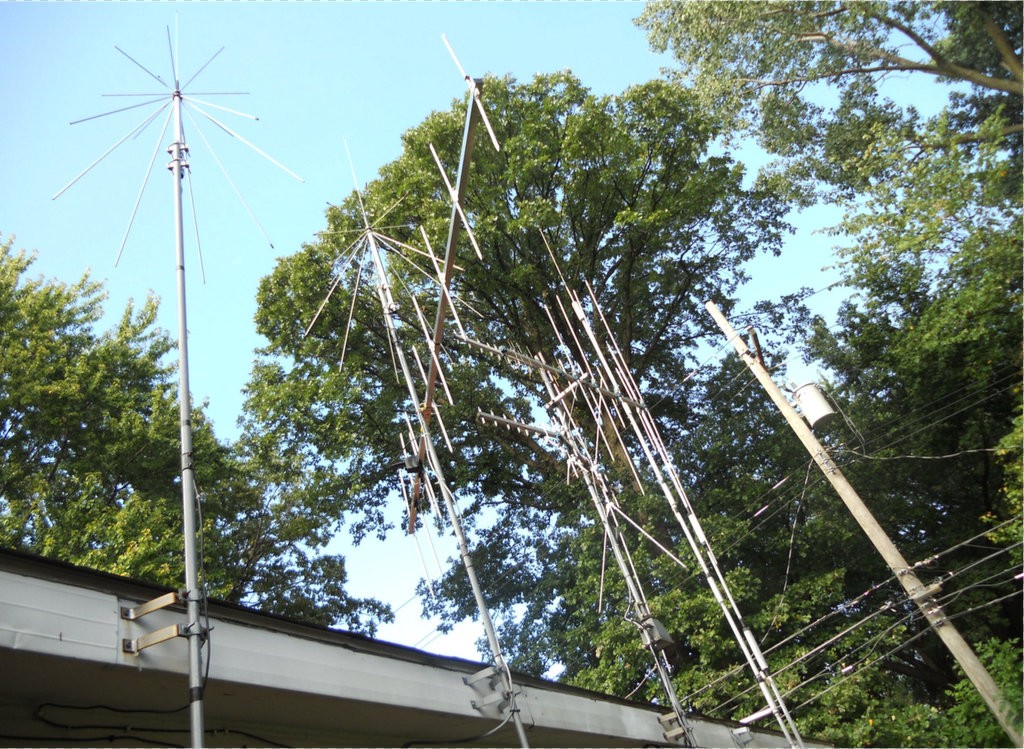
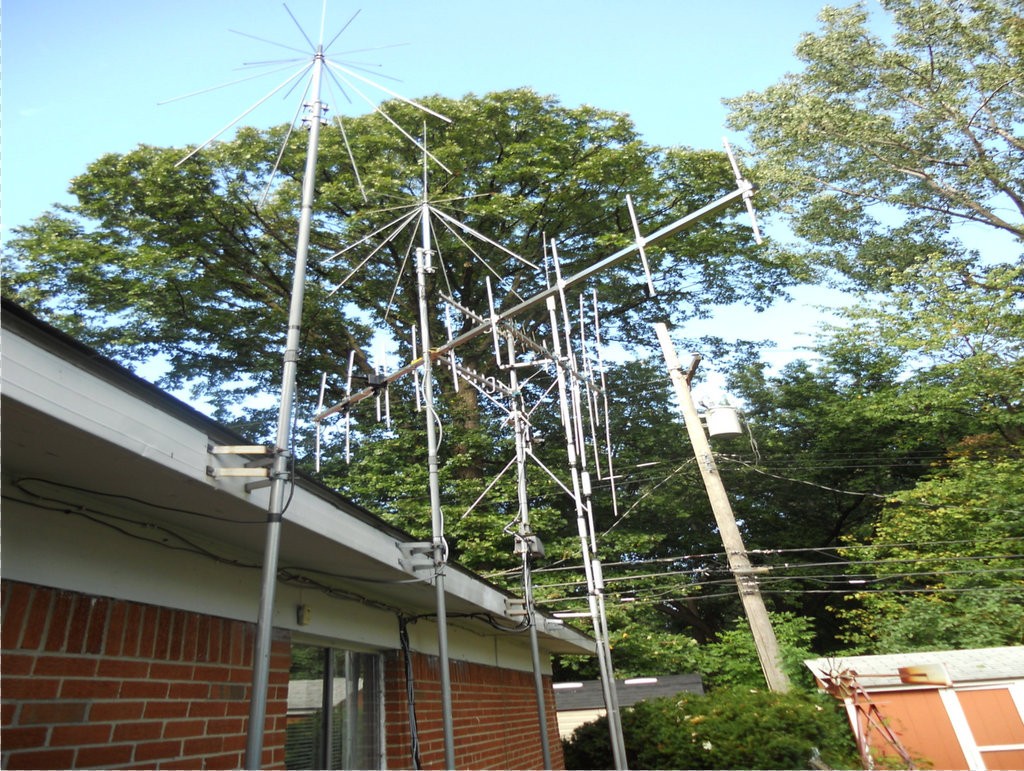
Notes: The Drake Receiver is my best–using a long wire and an antenna tuner.
S B Sharma
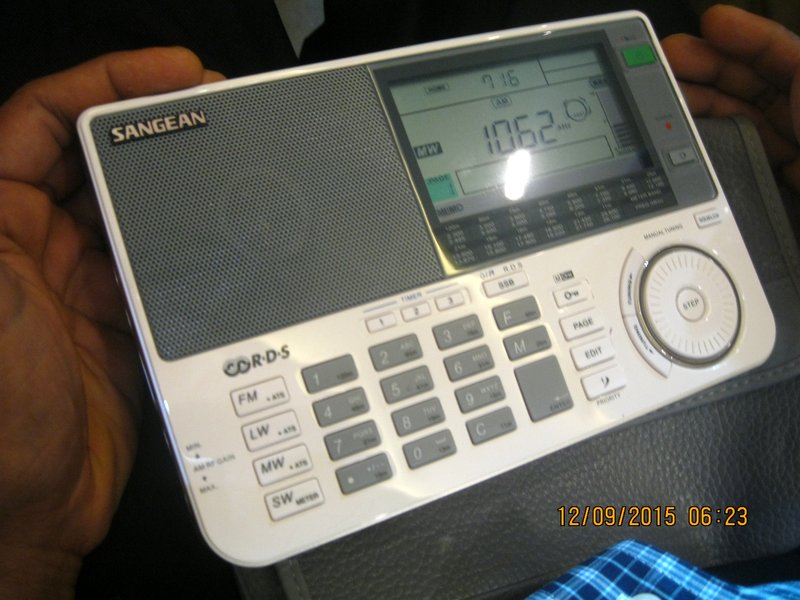

Notes: In the photo above, I am listening to radio at world famous Buddhist temple in Barbadur, Indonesia. Photo taken while I was surfing and listening voice of Indonesia and general overseas service of India on the temple. I have been listening to radio for the past 32 years and continue today. Due to this hobby, I won two free foreign tours till date and hope there will be some more.
Clyde Ramsdell (N1BHH)
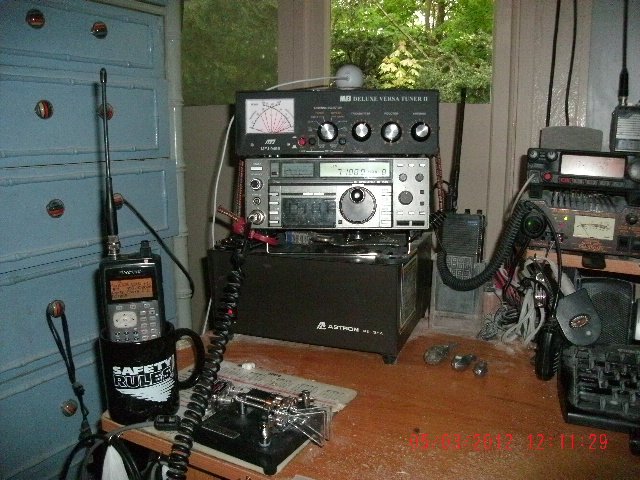
Notes: My simple station/listening post is the Icom IC-735 using one of three antennas:
- Off Center Fed Dipole (130 feet) at 45 feet high,
- 160 meter (250 feet long) dipole at 30 feet high,
- Random wire, roughly 45 feet draped around my room.
My bedside radio is a Grundig Yachtboy YB-400 with another random wire draped around the room. In the photo (above) you’ll find the Icom IC-735 on the Astron RS-35 power supply, MFJ-949E tuner and Bencher paddle, a Radio Shack Pro-106 scanner, Icom IC-3AT 220 HT and Yaesu FT-2900R.
Jawahar Shaikh
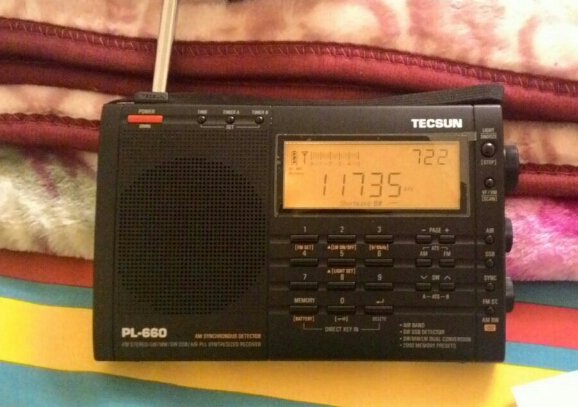
Notes: My favorite receiver is none other than Tecsun PL-660 as it pulls a lot of far away radio stations without any external antenna!!! On MW I could log a number of South Korea, Japan, and Australian radio stations.On shortwave, numerous far away radio stations including 1 KW Australian Marine Weather Broadcast station VMW. On longwave…Vow…Ireland radio on 252 khz…What else do I need from a budget Tecsun?
The tinyTecsun PL-660 is my DX magic box !!!! So,This is my listening post!
Location: Tamil Nadu state, India.
José William

Notes: This is my little shack that is located in my backyard.
Features:
Receiver- DEGEN DE 1103
Antenna- RGP3-OC Loop Magnética and DEGEN 31MS active loop antenna
Amplifier- Amplificador Indutivo de RF DXCB-V1
Recorder- Sony ICD-PX312F
Peter Ströhlein
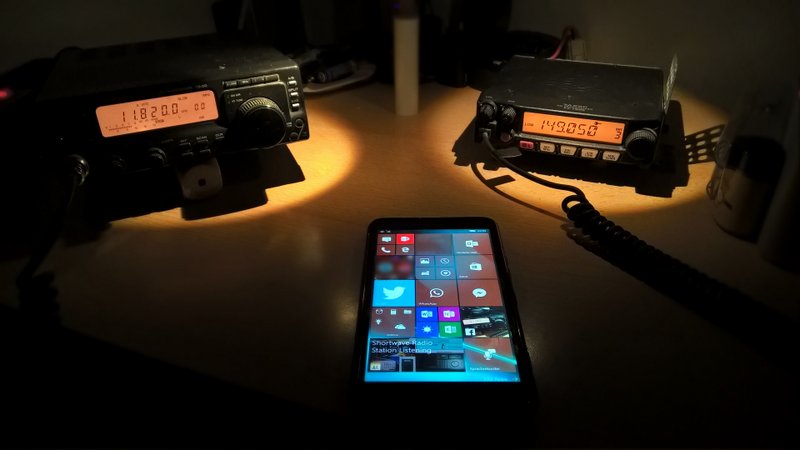
Notes: My Listeningt post consists of my fav. Kenwood TS-50 (30khz – 30Mhz) and a VHF YAESU FT-1900.
All night long when my kids are in bed, I spend my time listening to numerous SW Stations.
This is my hobby since nearly 30 years! 🙂 So that’s my little listening post, illuminated with two little LED-Spots for SWL Nights with “Style”. 🙂
Hank Dean (KU8S)
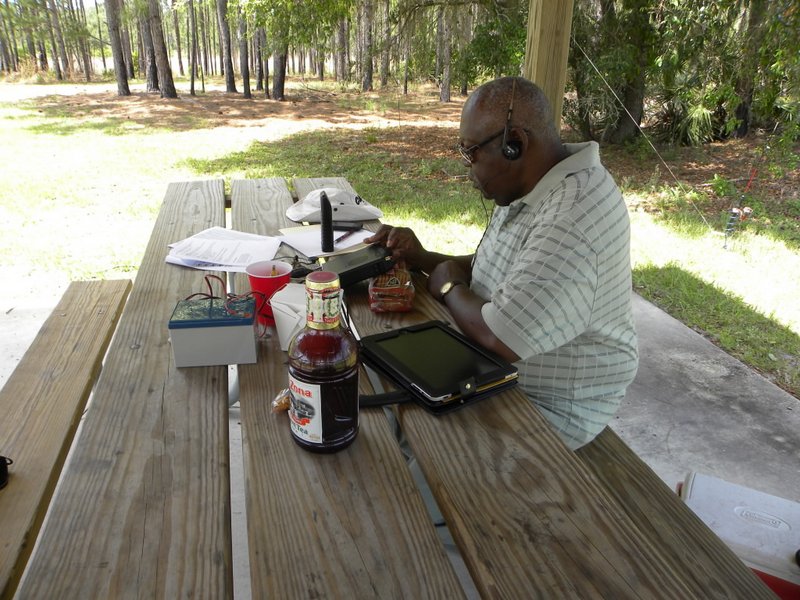
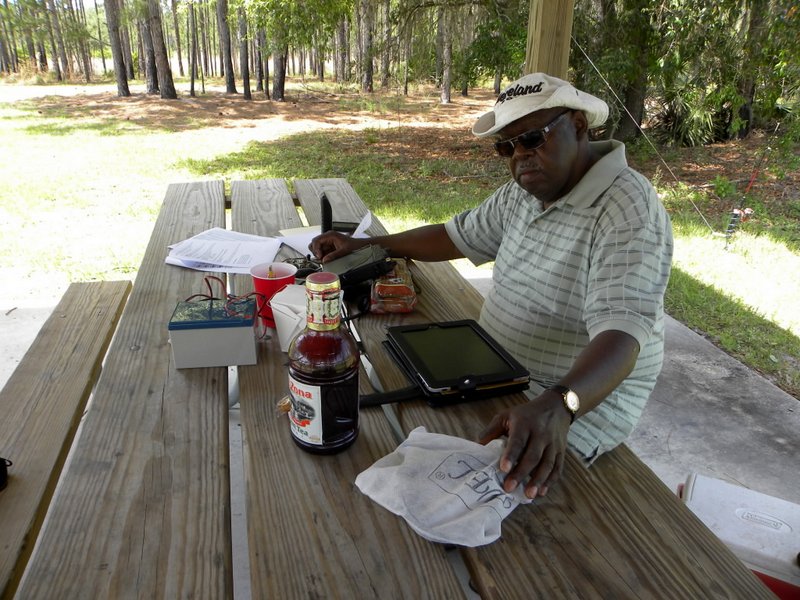

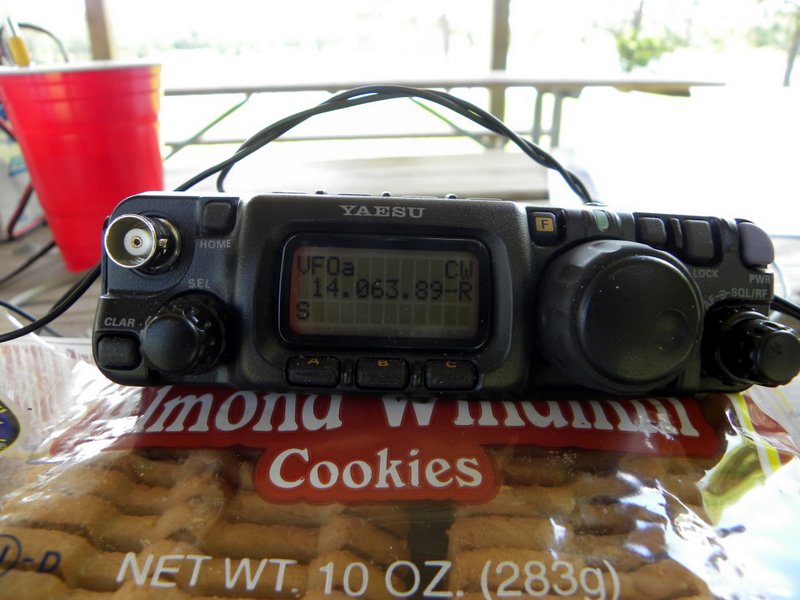
Notes: Here are four photos of a portable outing “QRP to the field” op in April 2013. This park is called Bear Pond and is located in the Seminole State Forest, west of Sanford, FL on SR 46, about four miles from my house. I love this place. Great place to have lunch and play radio.
The rig is a Yaesu FT-817ND QRP transceiver, a PAR end fed wire antenna, and SLAB 12v 10AHr battery. Apple IPad does the logging chores. Add some Chinese food, some almond cookies, a little sweet tea, Hmmnnnnnn, life is good!
Life is good, indeed, Hank! What a great way to cap off this third set of shack photos!
Again, many thanks to all who sent in their listening post photos. I absolutely love the variety!
Follow the tag Shack Photos for more!

